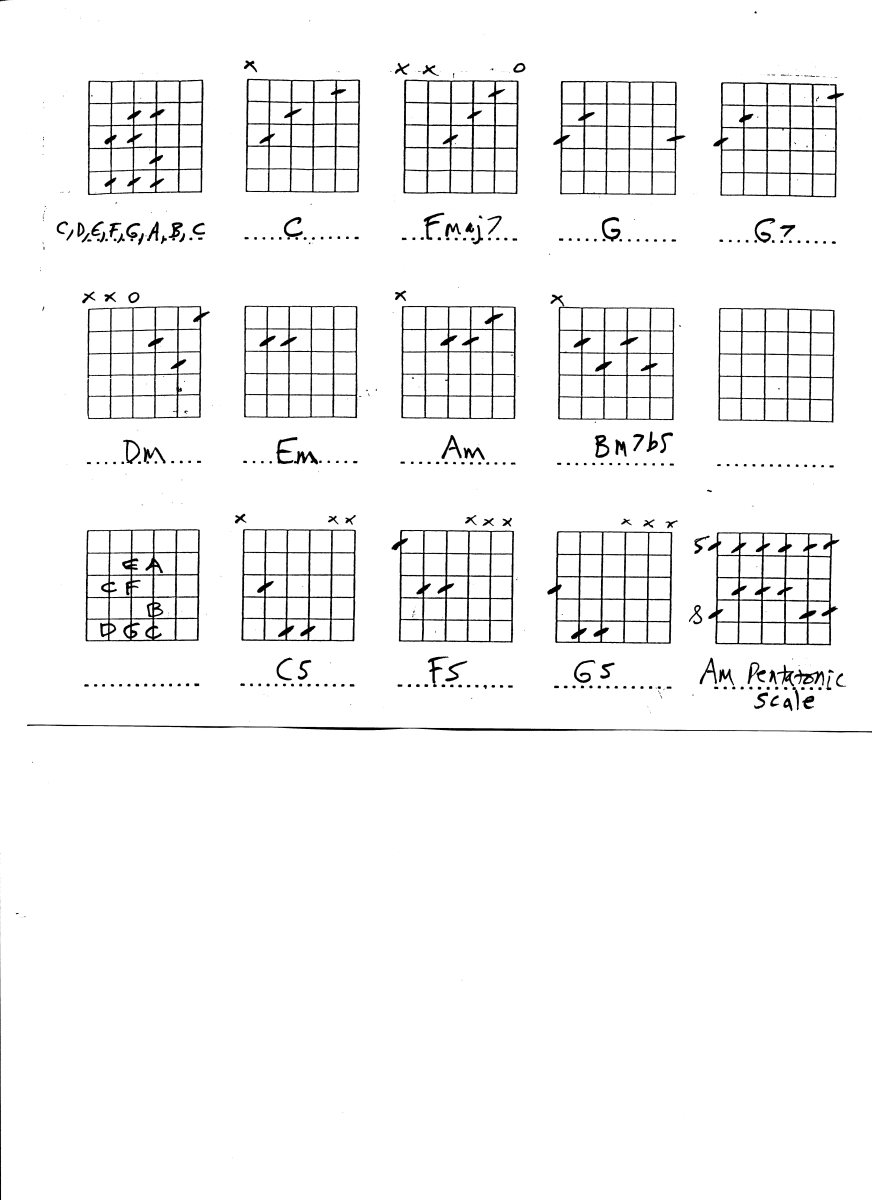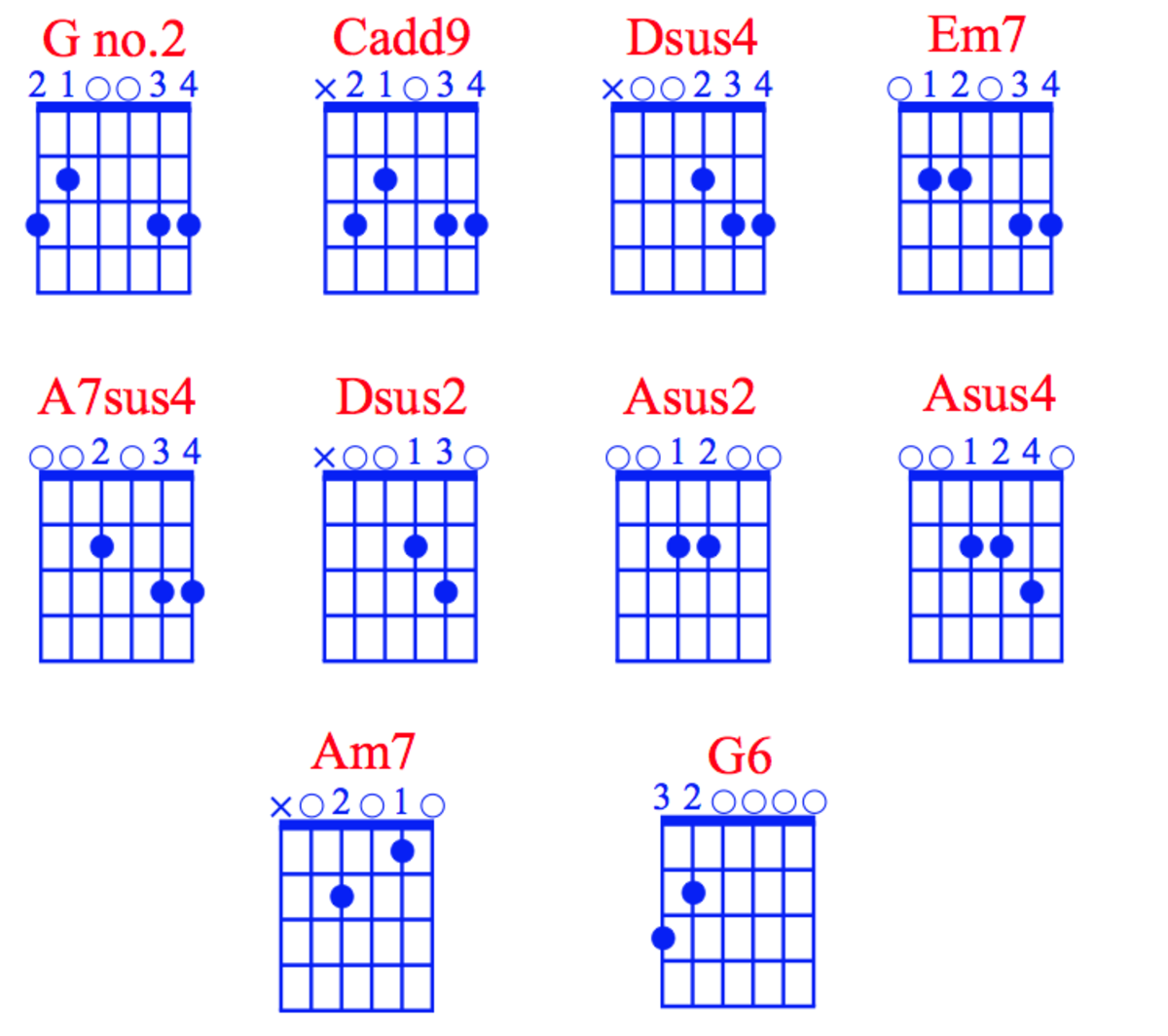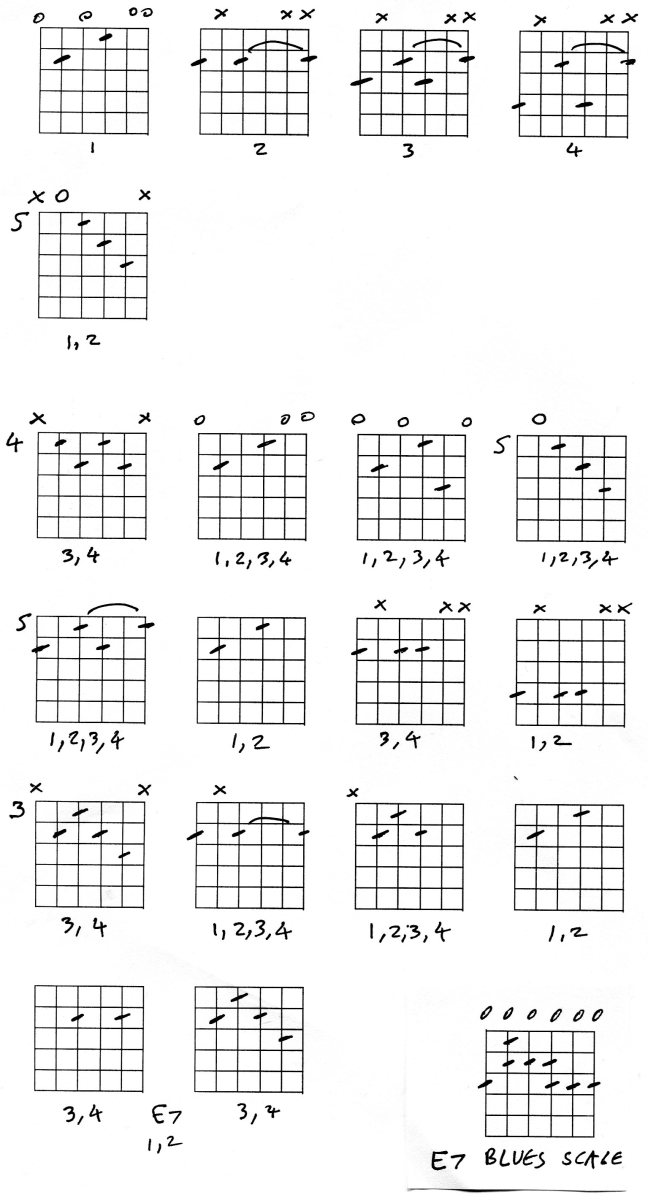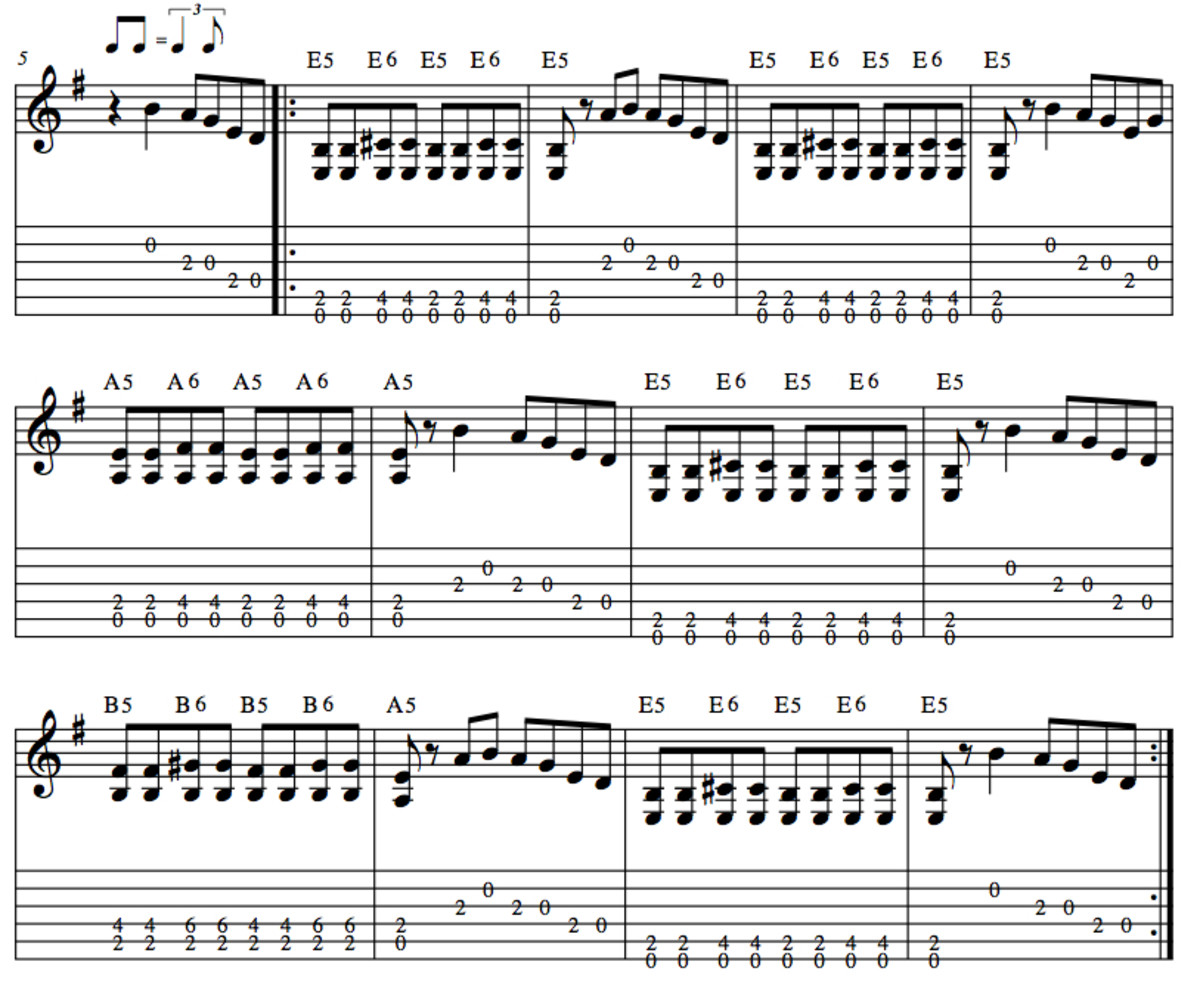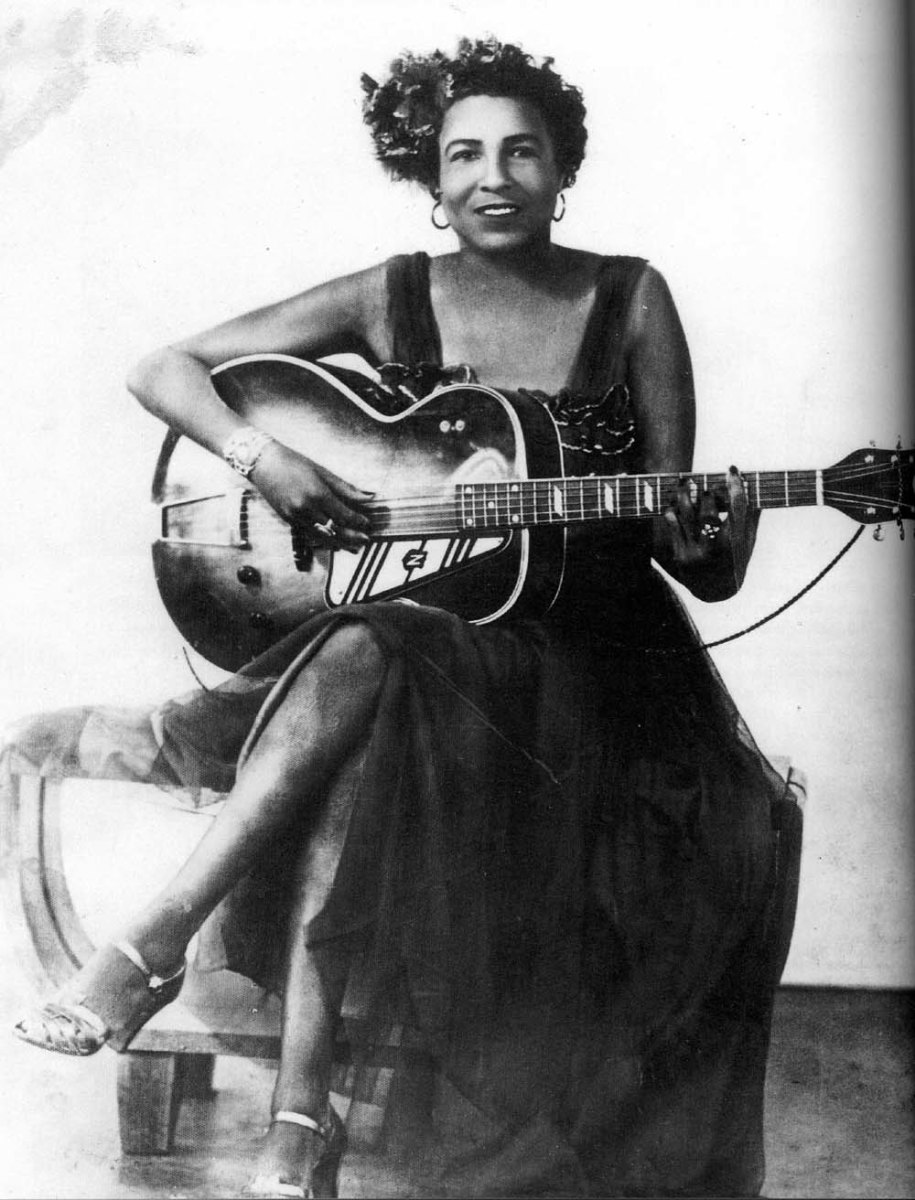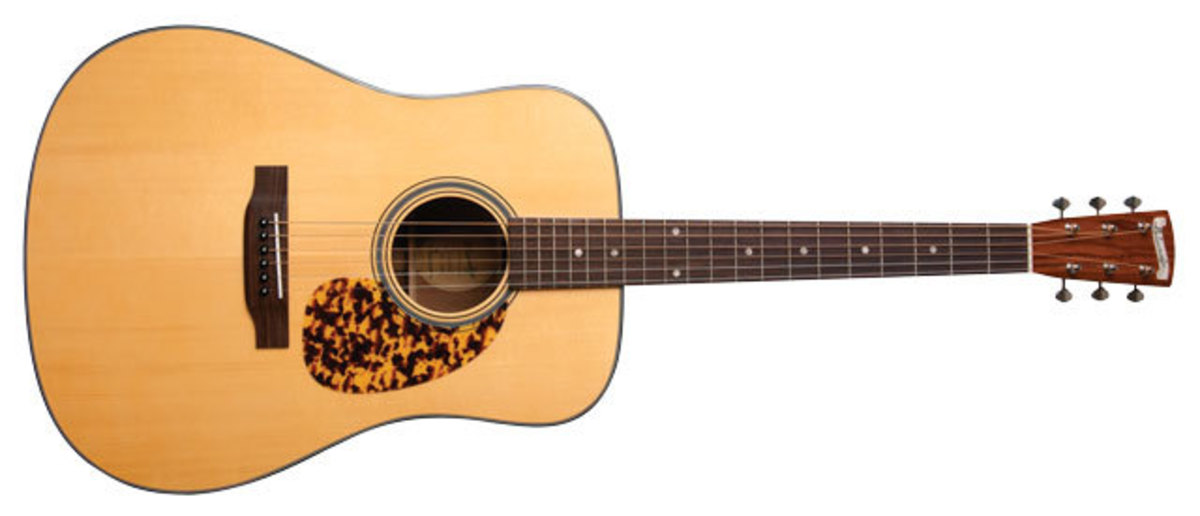Guitar Lesson Chord Shapes
Guitar Chords - CAGED
What is the CAGED system of guitar chords? - this will give you a brief overview of the system, but it's a big subject and you could literally write a book on it.
C, A, G, E and D refers to common chord shapes on guitar. Using these 5 chord shapes you can play the same chord all over the guitar fretboard, in different positions.
- Using this principle, you can learn the guitar neck really well, and give yourself options which will make changing chords easier, and also help in improvising solos.
- If you are playing with other guitarists using different chord shapes will improve the sound, an approach used extensively by The Beatles.
- For instance, if one guitar is playing a low C chord, playing a very high voicing of the same chord will give you a wide frequency range and a full sound. Look at the first and last chords on line 1 of the diagram for an example of this in action.
- If you play in a band, this is the easiest way of improving the sound with very little effort.
- One practice routine I use is to play as many different versions of one chord as possible, there are usually at least 6 or 7 of these.
Guitar Chords - CAGED
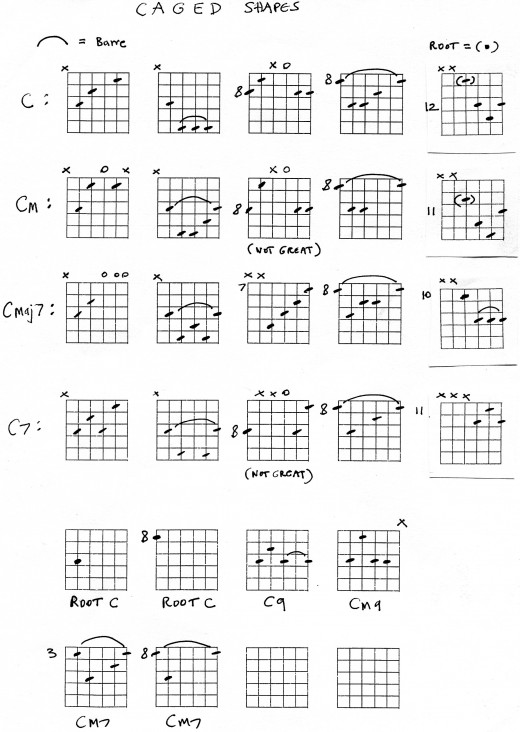
CAGED chord diagram
Each line shows the five shapes for each chord type, but with the emphasis on practical use - which is why some difficult barre shapes are omitted. The less useful shapes are labelled - they are there just to show a complete set of chords covering the neck, and they aren't good for general strumming techniques.
- Just to be clear - the first line of 5 shapes are 5 different ways to play a C Chord
- Next, the same shapes are adapted slightly to produce the other chords.
- To change from C to Cm, only one note needs to be altered - the E moves down one fret to E flat
- This theory applies to all major and minor chords
- Chord formulas are
- Major = 1, 3, 5
- Minor = 1, 3, flat 5
- These are intervals, measured from the root note of C, or whichever chord you are using.
Finally, the root notes for a C chord are shown - very important to learn these notes.
C9, Cm9 are very useful variations on the C7 chord shape.
Chord variants
Most of the time when you are playing songs you can play a more complex chord instead of the basic chord shown in the music or the tab.
- When you have a C chord you can usually replace it with a C maj7, C6, or C add9 chord, or alternate between several chord types - think of this as a family of compatible chords.
- Make a decision based on how good it sounds, and also whether it is a good stylistic fit with the individual song
- In the same way, a C7 chord can be replaced with C9 or even C13
- 7 chords are different in sound and function to normal major chords like C maj7 and C6
- A Cm chord can be replaced with a Cm7, or sometimes a Cm6 chord
Other chords
The CAGED system will work in the same way for all other chords, as long as you remember to compensate for open strings. Think of it in a positive way, it's learn one, get eleven free! Sort of.
- For D chords just move all shapes up 2 frets, for E up another 2 frets, etc - just remember to avoid open strings, unless they fit with the key you are playing in.
Lead guitar applications
An important but often neglected part of improvising is to play chord tones - so instead of basing guitar solos just on scales or modes, the notes of the chords are also important. If you learn the 5 shapes you can add any of these notes into your solo.
Just as the guitar neck is covered by the 5 chord shapes, there are also 5 interlocking patterns of the pentatonic scale that can be used for improvising or playing melody lines. Relating the map of scales and chords together, you can arrive at a very systematic and thorough knowledge of the guitar fretboard.
It could be helpful to visualize the pentatonic scale with the missing two notes from the major scale added, these notes could be seen as optional extras, depending on the underlying chords or harmony.


